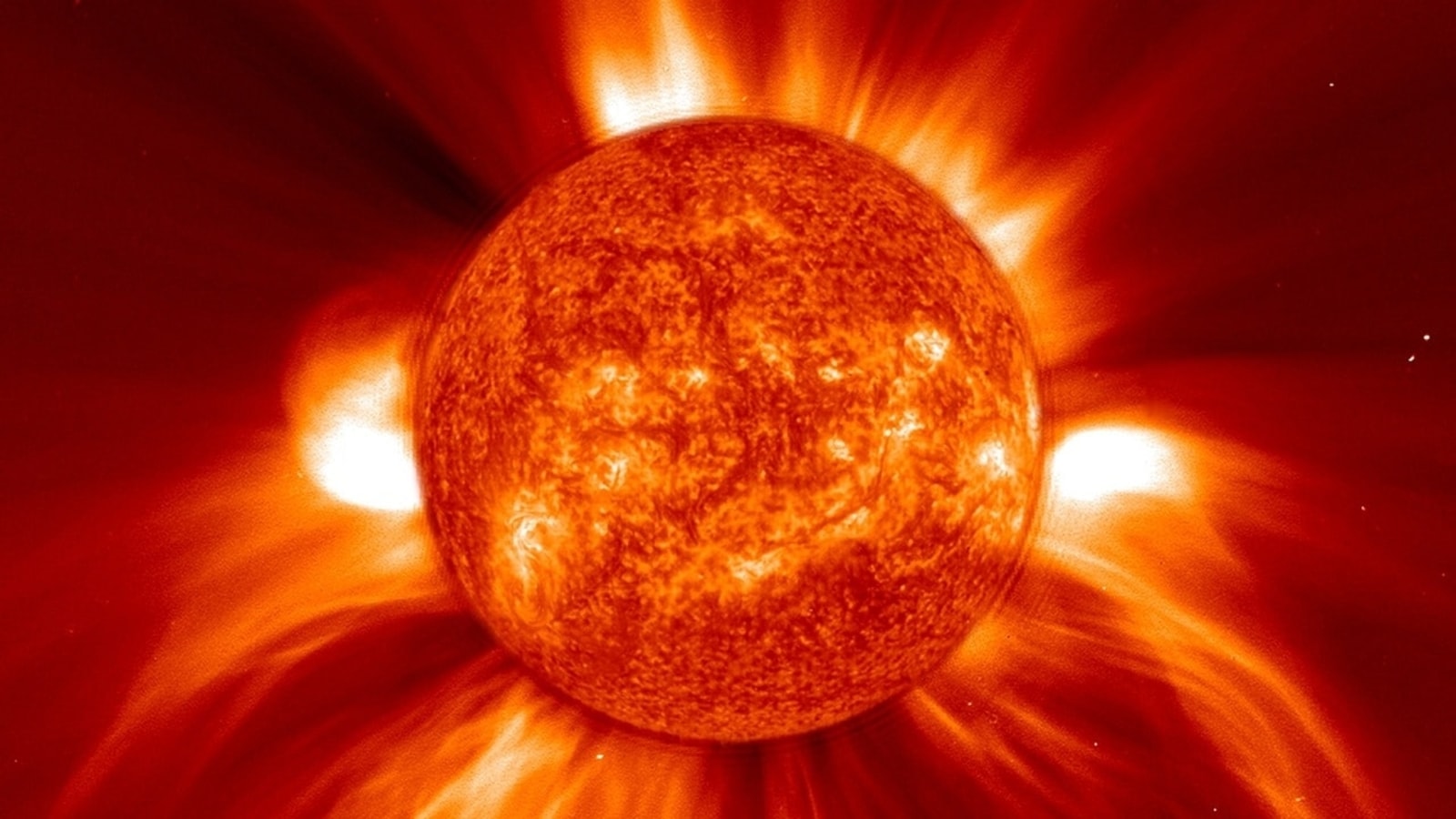G1-class Geomagnetic storm set to hit Earth as NOAA warns of cannibal CME
NOAA experts have warned that there are chances of a G1-class geomagnetic storm soon.






 View all Images
View all ImagesNOAA has warned that the progress of Solar Cycle 25 has surpassed scientific predictions, indicating a notably greater number of sunspots and solar storm eruptions than initially predicted by experts, and that forecast may not be very good news for Earth. The cycle began in December 2019 along with a significant surge in solar activity. Over a period of time, we have witnessed numerous dangerous solar storms striking Earth.
Recently, on July 14th, the most visually dramatic eruptions of Solar Cycle 25 occurred on the surface of the Sun emitting dark plasma from the Sun's southern hemisphere, a SpaceWeather.com report revealed. Surprisingly, this explosion originated within the magnetic canopy of AR3370, a previously hidden and subtle-sized sunspot. One of these coronal mass ejections (CME) escaped the Sun on July 14, "followed by a second faster CME on July 15th," the report added. Now, NOAA has warned that this CME is all set to hit Earth soon!
Impact of CME on Earth - Geomagnetic Storm
NOAA has warned that a G1-class geomagnetic storm is likely to hit Earth on July 18. "According to a NOAA model, the second CME will sweep up the first, forming a 'cannibal CME' that hits Earth on July 18th," Space Weather report suggested.
What is a cannibal CME? NASA explained exactly how a cannibal CME works. When multiple clouds of CMEs originate from the same location, a mesmerizing phenomenon occurs where a succeeding cloud has the ability to overtake and incorporate the leading one and thereby acquiring even greater strength. This absorption process leads to an amplification of the magnetic intensity, further boosting the strength and power of the assimilating CME. This is what is known as cannibal CME.
Is Radio Blackout expected?
NOAA experts have warned in the three-day weather forecast that solar activity is expected to be low with a chance for M-class flares and a slight chance for an isolated X-class flare through 18 July. This can lead to R1-R3/Strong radio blackout.
How do scientists observe space weather?
NASA explains that scientists use a variety of ground and space-based sensors and imaging systems to observe activity at various depths in the solar atmosphere. Currently, there is a fleet of NOAA satellites and some NASA scientific satellites. For example, CME alerts come from SOHO, STEREO beacon images of the far side of the Sun; and super high-resolution images from SDO, while NOAA's DSCOVR satellite monitors solar storms and the Sun's behavior.
Catch all the Latest Tech News, Mobile News, Laptop News, Gaming news, Wearables News , How To News, also keep up with us on Whatsapp channel,Twitter, Facebook, Google News, and Instagram. For our latest videos, subscribe to our YouTube channel.





























